#artist is hans memling
Text






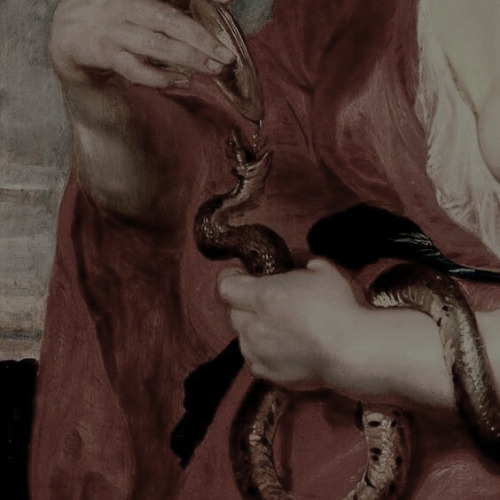
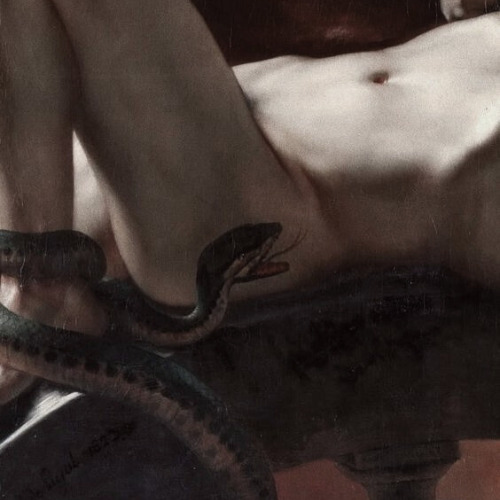
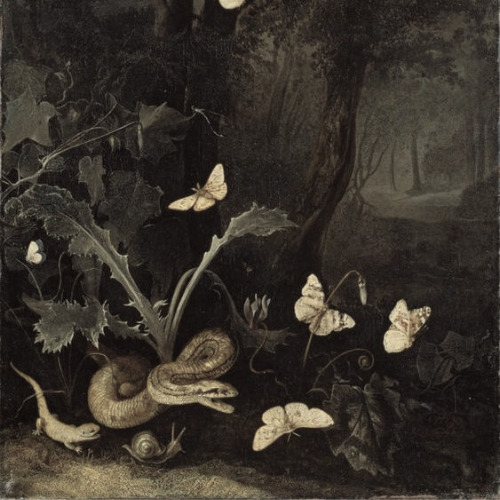






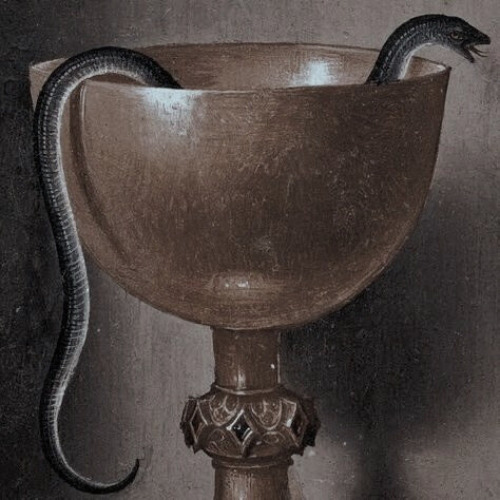
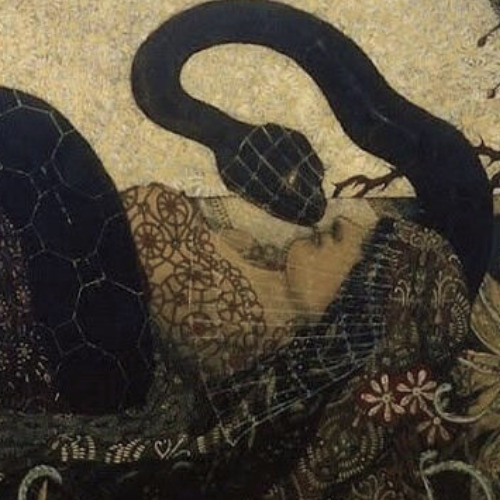
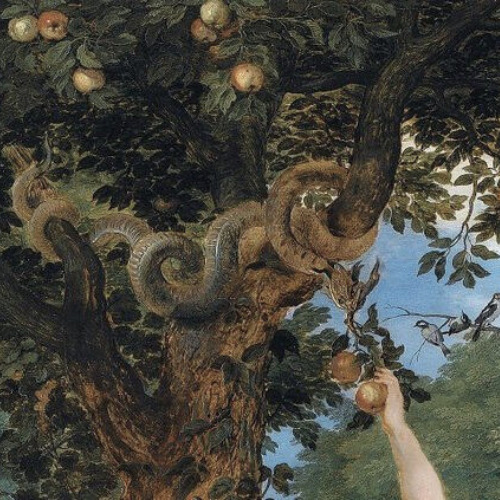



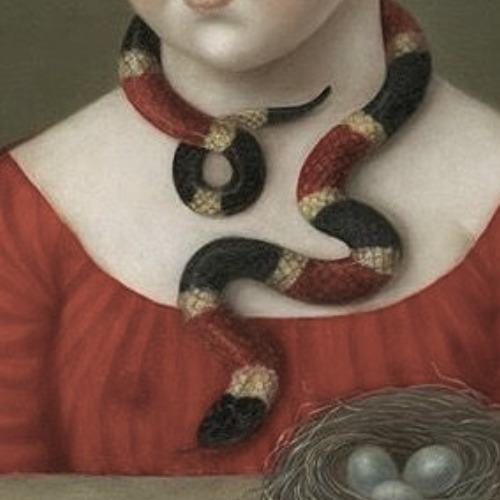

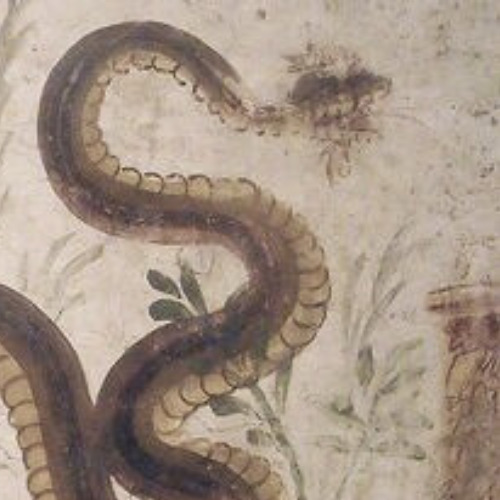

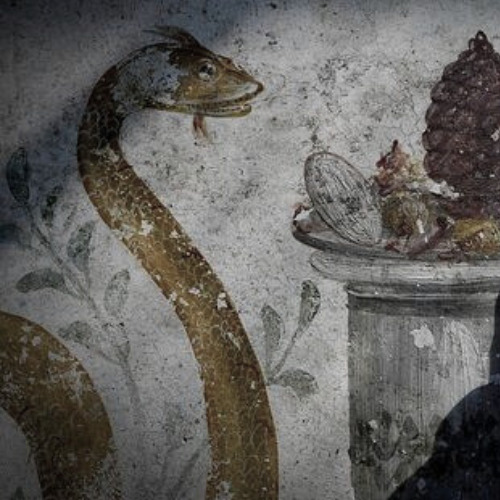

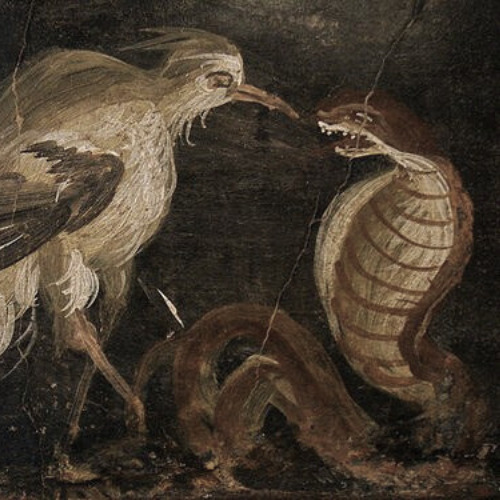


animals in art: snakes
#artist is otto marseus van schrieck#cant find artist#-cant find artist#artist is james barry#artist is peter paul rubens#artist is caraviggio#cant find artist-#artist is alexandre denis abel de pujol#artist is otto marseus vans schrieck#welp cannot find the artist for the life of me#artist is albrehct durer#artist is pierre-joseph mousset#artist is piero di cosimo#--cant find artist#--cant find artist--#artist is hans memling#artist is carl strathmann#artist is jan brueghel the elder#artist is karl wilhelm de hamilton#artist is giulio aristide sartorio#artist is francois edouard cibot#artist is fatima ronquillo#artist is frederic leighton#this is actually from a vase painting#painting is from a vase painting#this painting is from pompeii#artist is unknown#-artist is unknown#artist is is kitagawa utamaro#art is from a book called the book of the world
722 notes
·
View notes
Photo

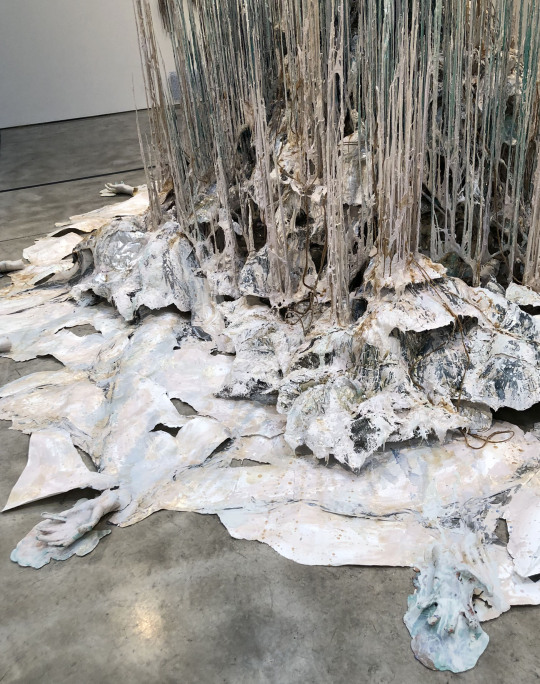



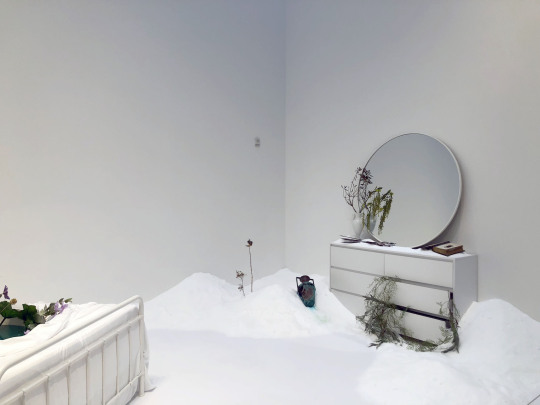
Closing today at Kasmin in NYC, is Shades of Daphne, curated by Stephanie Cristello. It is a “timely survey of painting, sculpture, installation, and film by a group of 11 international and intergenerational contemporary artists, many of whom have not previously exhibited in the United States.”
From the Kasmin gallery website-
Bringing together recent and historical works spanning over three decades from the 1990s to the present, the exhibition includes new commissions, site-specific performances and installations that respond to the architecture of the gallery space.
Celebrating the spirit of resistance and revolt, the exhibition takes the figure of Daphne—the Ancient Greek nymph who turned herself into a laurel tree to escape Apollo’s pursuit—as metaphor to explore work that engages with hybrid figures, metamorphoses, and suspended states of becoming. Highlighting deconstructed impressions of the body in relation to mythologies of transformation, the exhibition focuses on work that features remnants of presence even when the figure is absent—objects that hold the memories of living things. Acting as portals, thresholds, and containers of shifting states, each work also engages with architecture as a framework, both in reference to the body and to spaces constructed for both personal and collective ritual.
Information on Diana Al-Hadid’s sculpture, The Long Defeat, 2017-2023–
Diana Al-Hadid’s (b. 1981 Aleppo, Syria) sculpture takes the Flemish primitive painter Hans Memling’s Allegory of Chastity (c. 1475) as a starting point. The work pictures the bodice of a female figure, her head bowed, hands interlaced at the waist, surrounded by the mouth of a volcanic mountain. Al-Hadid’s first interpretation of the painting culminated in the monumental sculpture Citadel (2017–18), a hollowed silhouette of a woman framed by the base of an embankment whose porous mass extends like a root system toward the ground. Her face is vacant of features, delineated instead by two severe lines like one would find in the initial sketch of a portrait artist, that indicate her gaze remains lowered. Yet in contrast to the demure painting, the massive scale of the work allows for her downcast eyes to stare straight into those of the viewer below.
Information on Bianca Bondi’s installation, The Antechamber (Myths of descent and return), 2023-
An iteration of Bianca Bondi’s (b. 1986, South Africa) installation for Busan Biennale 2020, The Antechamber (Myths of descent and return), grew from a translation of Kim Hyesoon’s poem, “Tundra Swan.” As Bondi states: “salt is essential for life but too much brings death.” Taking inspiration from paintings such as Henri Gervex’s Rolla (1878) or John Everett Millais’s Ophelia (1851–52), we observe a clinical but feminine bedroom setting composed of a bed with a pond at its center, echoing a circular mirror above a dresser at the end of a pathway through the tundra. Salt surrounds the installation, representing both preservation and resurrection. A swan stands alone, symbolizing the force of art and poetry. This is the third chapter of the installation, following the Thailand Biennial in 2021.
#kasmin gallery#diana al-hadid#bianca bondi#nyc art shows#sculpture#art installation#nyc art gallery#chelsea nyc art gallery#art shows#art#kim hyesoon#henri gervex#john everett millais#hans memling
14 notes
·
View notes
Photo
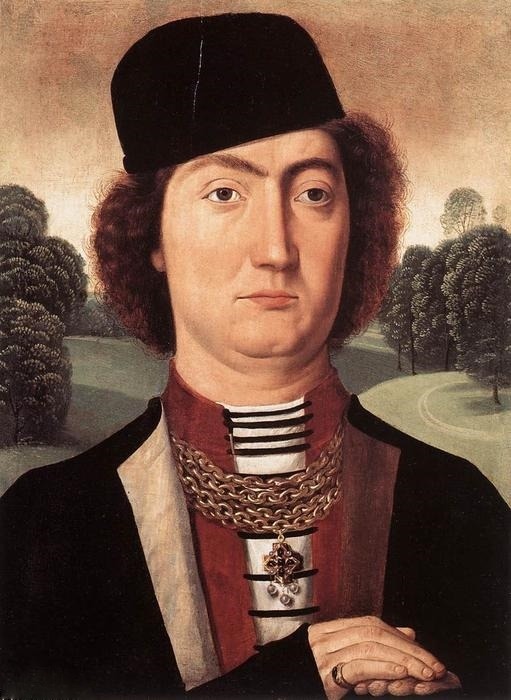
Jacques of Savoy, Count of Romont and Lord of Vaud. Unknown artist (after Hans Memling).
He was the 7th son of Louis, Duke of Savoy and Anne de Lusignan.
6 notes
·
View notes
Text
This widespread tradition in Italy and Northern Europe during the 15th and 16th centuries will be explored through approximately 60 double-sided and covered portraits from The Met collection and other American and European institutions, including the reunion of several portraits and their covers that had been split and made part of separate collections. Painted by artists such as Hans Memling, Lucas Cranach, Lorenzo Lotto, and Titian, the works range from portraits intended as portable propaganda to those designed to conceal a lover's identity. These varied three-dimensional, hand-held ensembles shed significant light upon the intimate and personal nature of portraits designed as interactive objects.
0 notes
Text

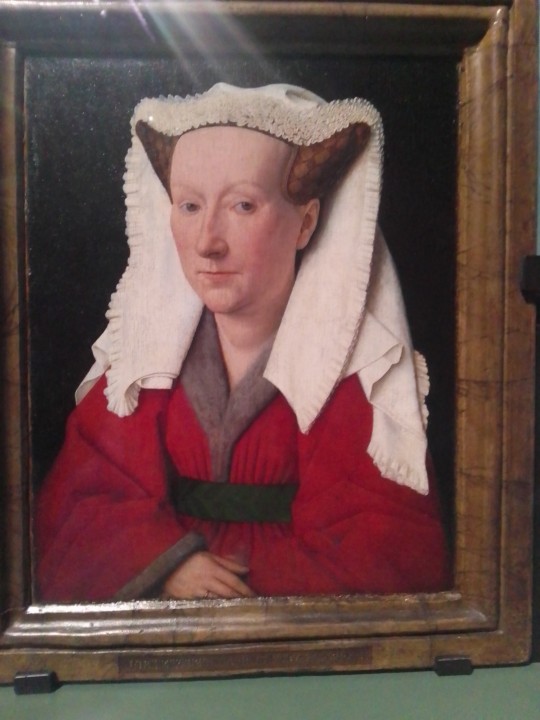
In the Groeningemuseum today I saw some of the paintings I was reading about yesterday including these two famous portraits from the 15th century. On the left is Philip the Good, Duke of Burgundy,* painted by Rogier van der Weyden, and on the right is the portrait of the artist Jan van Eyck's wife, Margareta van Eyck. Also there was the work of Hans Memling, Petrus Christus, Master of the Legend of Saint Ursula, Jan Provoost and Gerard David. And I picked up these tidbits of information:
In the 16th century, Bruges produced two artististic dynasties that remained active until well into the 17th century: the Claeissens and the Blondeel-Pourbus families. The Claeissens continued to dominate the Bruges art market with allegorical compositions whose meaning is sometimes hard to decipher. Pieter Pourbus trained both his son Frans and grandson Frans II, the latter of whom painted the official portraits of the Archdukes Albert and Isabella.
*For context, Brussels became the capital of the French duchy of Burgundy in the 1430s. CHECK - MORE READING ON THIS TOPIC IS REQUIRED!!!

0 notes
Text
Les grands peintres : Les primitifs Flamands – Hans Memling (Vers 1435-1440 – 11 août 1494)
Hans Memling (Vers 1435-1440 – 11 août 1494)
Hans Memling est l’un des artistes néerlandais les plus éminents et les plus productifs de la fin du XVe siècle, il fait partie de la deuxième génération de peintres de la Renaissance du Nord, plus connue sous le nom de Primitifs flamands, qui développèrent la représentation réaliste des figures humaines, des constructions architecturales et des…

View On WordPress
0 notes
Text
"A third major source for plant symbolism was the medieval herbal. Herbals described the natural properties of plants, the method for their cultivation, and their use in cooking and in medicine. These properties, as well as the plant’s shape, color, taste, smell, and season of blooming, usually lent themselves to a moral connotation."
moreover,
"
Because of the wealth and variety of source materials, a single plant often had various and sometimes conflicting meanings ascribed to it. Because of its bright red color, the carnation is usually depicted as a symbol of love. The Greek name for carnation, dianthos, means “flower of God,” and for this reason the carnation often appears in paintings of the Madonna and Child. A vase of carnations, indicating divine love, was a popular motif in northern Italian Renaissance painting (12.178.2). The carnation could also symbolize earthly love and marriage: in the Low Countries, a bride often carried a pink, the carnation’s relative, on her wedding day. According to folkloric tradition, the bride concealed the pink somewhere on her person, to be found later by the bridegroom. The association of pinks with love and marriage is clearly intended in portraits—usually commemorating a marriage or betrothal—in which the sitter holds a pink. A panel attributed to Hans Memling (49.7.23) and a portrait by Rembrandt (14.40.622) attest to this enduring association over a span of two centuries.
Many plants associated with major gods in the pagan tradition were later adapted as Christian symbols. The beech tree, for example, was sacred to Jupiter in antiquity, while in Christian imagery, it is an attribute of Christ. "
1 note
·
View note
Text
Courbet’s The Wounded Man (1844-54)

Courbet's early self-portrait as a wounded man is a portrait of the dying artist wounded (thus, painted) by his own sword (brush). Not only will death "illustrate" the completion of this painting but swords often symbolize a brush and blood, paint. An expert has made these links before while others have noted how Courbet adopts the iconography of St. Sebastian, the supreme symbol of the self-referential artist.1 In addition, the sword's handle spells C for Courbet in mirror-form which in turn suggests that the surface of this mirror (the image) is the surface of the artist's mind.2

The composition we see today was painted over an earlier work by Courbet with his lover in his arms. A charcoal sketch gives us a good idea of what the couple once looked like, Courbet in a near-identical pose.3 Courbet's hand gesture is based on Sebastian's in Delacroix's 1836 canvas, analyzed yesterday in its own entry. What only one expert has noticed is that the open hand with separated thumb is a symbol for the palette-hand because an artist's thumb is typically inserted through a palette's hole.4 The hand and its pose held the same meaning for Delacroix.

In the Wounded Man'sfinal version the only visible hand holds onto his cloak, the thumb still separated from the fingers by fabric. It is a pose Courbet used more obviously with greater exaggeration, and with the same meaning, in Man with the Leather Belt (c.1845-6).

In a much later pen sketch of the Wounded Man Courbet lets the shape of the whole sword rhyme with the initial G for Gustave in the lower left corner, also in mirror-fashion, while the hilt continues to resemble a C.

Other important shapes include two subtle eye-forms above and on either side of Courbet's hand. On the near side an opening in his cloak allows us to see his white shirt as though it is a partly-opened eye crowned by an eye-lash, the waving hem. On the far side, curved folds suggest a closed eyelid. The artist's torso thus emerges from above two "eyes": one open to material reality, the other closed for insight.
This, then, is how I perceive the scene. We are inside the artist's mind, as demonstrated both by the "letters" in mirror-reversal and the opening to the sky in the upper right distance formed as though it is the corner of a third eye. Inside the artist lies wounded, having painted himself with his own paintbrush, the sword. His other hand clutches his cloak to suggest a palette-hand. Thus the dying Courbet is both artist and painting, his head and torso merging with a great tree-trunk. The artist's image of himself inside his mind emerges from the combination of the two eye-forms in his cloak, representing the two forms of an artist's visual perception: insight and out-sight.
Notes:
1. Fried describing Courbet's Wounded Man recognizes the sword as a paintbrush, the hand as symbol for the palette and the blood as paint. Michael Fried, Courbet’s Realism (University of Chicago Press) 1990, p. 193; For Courbet's reference to Delacroix's St. Sebastian, see Linda Nochlin, "Gustave Courbet's Meeting: A Portrait of the Artist as a Wandering Jew", Art Bulletin 49, September 1967, p. 219 and Laurence des Cars in Gustave Courbet (New York: Metropolitan Museum of Art) 2008, p.113. For more examples of swords as brushes, blood as paint, and strained thumbs indicating plaette-hands, see themes here titled Swords/Weapons as Brushes and Brush and Palette. For examples of St. Sebastian as the self-referential artist, see entries here on St. Sebastians by Mantegna, Dürer, Michelangelo, Hans Baldung Grien, Hans Memling, Carlo Crivelli, Antonio Campi, Lorenzo Lotto, Giordano, Delacroix and Egon Schiele.
2. For other examples see the theme Letters in Art.
3. Gustave Courbet (1819-1877) (Paris: Éditions des musées nationaux) 1977, pp. 122-3
4. Michael Fried, as above in n.1
1 note
·
View note
Text
Hans Memling was a renowned Early Netherlandish painter, active in the late 15th century. He was born around 1430-1440, likely in Germany, but he spent the majority of his career working in Bruges, a prominent city in Flanders (now part of Belgium). Memling is known for his exquisite religious paintings, portraits, and altarpieces.
He trained in the artistic workshop of Rogier van der Weyden, a significant Flemish painter of the time. Memling's style was influenced by van der Weyden but evolved to have its own distinct characteristics, showcasing a remarkable attention to detail, exquisite color palette, and a serene, graceful approach to religious subject matter.
Some of his most famous works include the "Reliquary of St. Ursula" in the Hospital of St. John in Bruges and the "Triptych of the Madonna" at the Galleria Sabauda in Turin, Italy. His religious paintings often feature richly detailed landscapes, intricate architectural elements, and delicate, emotive figures.
Memling's portraits were also highly esteemed. He had a unique ability to capture the individuality and character of his sitters. His compositions often featured subjects in three-quarter view against plain backgrounds, allowing for an intense focus on the subject's facial features and expressions.
Throughout his career, Memling gained recognition for his technical mastery and his ability to infuse spirituality and humanism into his works. His art continues to be admired for its beauty, symbolism, and the emotional depth conveyed in his depictions.
edisonmariotti @edison
.br
Hans Memling foi um renomado pintor holandês antigo, ativo no final do século XV. Ele nasceu por volta de 1430-1440, provavelmente na Alemanha, mas passou a maior parte de sua carreira trabalhando em Bruges, uma cidade proeminente na Flandres (agora parte da Bélgica). Memling é conhecido por suas requintadas pinturas religiosas, retratos e retábulos.
Formou-se na oficina artística de Rogier van der Weyden, um importante pintor flamengo da época. O estilo de Memling foi influenciado por van der Weyden, mas evoluiu para ter características próprias e distintas, apresentando uma atenção notável aos detalhes, uma paleta de cores requintada e uma abordagem serena e graciosa de assuntos religiosos.
Algumas de suas obras mais famosas incluem o "Relicário de Santa Úrsula" no Hospital de São João em Bruges e o "Tríptico de Nossa Senhora" na Galleria Sabauda em Torino, Itália. Suas pinturas religiosas costumam apresentar paisagens ricamente detalhadas, elementos arquitetônicos intrincados e figuras delicadas e emotivas.
Os retratos de Memling também foram muito apreciados. Ele tinha uma habilidade única de capturar a individualidade e o caráter de seus modelos. Suas composições frequentemente apresentavam temas em visão de três quartos contra fundos simples, permitindo um foco intenso nas características e expressões faciais do sujeito.
Ao longo de sua carreira, Memling ganhou reconhecimento por seu domínio técnico e sua capacidade de infundir espiritualidade e humanismo em suas obras. Sua arte continua a ser admirada por sua beleza, simbolismo e profundidade emocional transmitida em suas representações. @edisonblog

0 notes
Text
Milano, apre al pubblico “Occhio Animale”, la mostra personale di Saverio Polloni

Milano, apre al pubblico “Occhio Animale”, la mostra personale di Saverio Polloni.
Alle soglie del Salone del Mobile, apre presso la galleria d’arte Maurizio Nobile Fine Art di Milano dal 13 al 29 aprile 2023 la mostra personale di Saverio Polloni “Occhio Animale”. Attraverso una selezione di circa 15 opere, l’esposizione presenta il più recente percorso di ricerca dell’artista milanese legato al noto progetto “Ritratti di Animali”, iniziato nel lontano 2002. Il mondo animale coniugato al concetto del ritratto, altrettanto evocativo di una tradizione altissima, che prende le mosse dall’arte fiamminga (Jan van Eyck, Rogier van der Weyden, Hans Memling ecc.) sino ad approdare al Novecento. Da lì il ritratto non ha più significato come genere a sé stante, ma come parte della ricerca personale dell’autore. In questa direzione si pone l’arte di Polloni, come continuo approfondimento di un iter individuale, da sempre esclusivo e totalizzante, dall’artista portato avanti con grande vigore al punto da raccogliere da subito l’entusiasmo di una committenza affascinata dall’unicità del suo percorso.
È l’artista stesso a illustrare i fondamenti del suo fare arte: “l’elemento primo che caratterizza i miei ritratti è la riproduzione sempre a grandezza naturale dei soggetti. Le variabilità cromatiche, di forme e dimensioni, gli elementi simbolici e allusivi di cui sono portatori gli animali mi permettono infinite combinazioni espressive e compositive”.
Gli animali di Polloni, infatti, presuppongono uno sguardo che va al di là delle apparenze. Sono resi mediante pose teatrali debitrici della prospettiva barocca. Il boccascena diventa la ‘linea’ che introduce lo sguardo nella dimensione dell’infinito, attraverso atmosfere iridescenti: lo spazio che si crea è uno spazio altro. Entro questa nuova dimensione l’animale si atteggia regalmente, in un’ottica affine a quella delle raffigurazioni rinascimentali, guardandoci negli occhi, catturando qualcosa del nostro sguardo umano per conservarlo intatto. È evidente la consapevolezza di essere osservati. Ma loro non sono in posa, non sono umanizzati. Sembrano, piuttosto, placidamente soddisfatti di sé.
I “Ritratti” di Polloni rivelano sin dal titolo la filosofia sottesa dell’artista, nella sua riconoscibilità del soggetto: non quell’animale, ma un animale. Si spiegano in tal modo i titoli delle opere; codici neutri, in un invito oltre l’evidente. Così l’immagine, l’animale, è depositario di differenti livelli di lettura. Il punto interrogativo da affiancare a questi “ritratti” è d’obbligo, e lascia a ognuno la possibilità di attribuire o meno l’essenza a immagini e animali. Si presuppone pertanto uno sguardo mai scontato, capace di andare oltre l’illusoria uniformità della superficie.
Profilo di Saverio Polloni
Saverio Polloni nasce a Milano nel 1957. Frequenta e si diploma all’Accademia di Belle Arti di Brera nel 1980. Due anni dopo fonda uno studio di illustrazione pubblicitaria, avendo come committenti le principali aziende italiane e estere. Numerosi sono i suoi soggiorni di studio a Londra e a Parigi. Artista eclettico matura esperienze nel campo della moda e dell’Industrial design. Nel 1998 dopo un anno passato a sperimentare nuove tecniche (i suoi dipinti sono una sovrapposizione di colori acrilici e olio) si dedica a tempo pieno al suo progetto “Ritratti di Animali”, nato come sfida all’allora imperante astrattismo visivo presente nelle arti visive.
Dal 2002 al 2017 soggiorna e lavora regolarmente a Madrid. In questo periodo espone alla National Gallery di Victoria (Seichelles) e all’Italian Artist in Dubai, che decretano la sua fortuna internazionale.
Dal 2022 vive e lavora a Toledo.
____________
Saverio Polloni
OCCHIO ANIMALE
13 - 29 aprile 2023
Maurizio Nobile Fine Art
via Santo Spirito 17, 20121 Milano
(Sito Privato Bagatti Valsecchi - primo piano)
Contatti: +39 (02) 50306384
Email: [email protected]
maurizionobile
Orari: dal martedì al sabato dalle ore 10 alle ore 19
Ingresso: libero
...
#notizie #news #breakingnews #cronaca #politica #eventi #sport #moda
Read the full article
0 notes
Text
Toys Market Environment In China
New Post has been published on https://wr1tepress.com/toys-market-environment-in-china/
Toys Market Environment In China
The number of young kids under the age of 14 and infant, toddler and preschool in China is over 300,000,000, accounting for 25% of the whole population. Among them 80,000,000 live in the city, which form a large numbers of toy consumption.
The First Theft:
The first documented case of art theft was in 1473, when two panels of altarpiece of the Last Judgment by the Dutch painter Hans Memling were stolen. While the triptych was being transported by ship from the Netherlands to Florence, the ship was attacked by pirates who took it to the Gdansk cathedral in Poland. Nowadays, the piece is shown at the National Museum in Gdansk where it was recently moved from the Basilica of the Assumption. The Most Famous Theft:
The most famous story of art theft involves one of the most famous paintings in the world and one of the most famous artists in history as a suspect. In the night of August 21, 1911, the Mona Lisa was stolen out of the Louver. Soon after, Pablo Picasso was arrested and questioned by the police, but was released quickly.
It took about two years until the mystery was solved by the Parisian police. It turned out that the 30×21 inch painting was taken by one of the museum employees by the name of Vincenzo Peruggia, who simply carried it hidden under his coat. Nevertheless, Peruggia did not work alone. The crime was carefully conducted by a notorious con man, Eduardo de Valfierno, who was sent by an art faker who intended to make copies and sell them as if they were the original painting.
While Yves Chaudron, the art faker, was busy creating copies for the famous masterpiece, Mona Lisa was still hidden at Peruggias apartment. After two years in which Peruggia did not hear from Chaudron, he tried to make the best out of his stolen good. Eventually, Peruggia was caught by the police while trying to sell the painting to an art dealer from Florence, Italy. The Mona Lisa was returned to the Louver in 1913.
The Biggest Theft in the USA:
The biggest art theft in United States took place at the Isabella Stewart Gardner Museum. On the night of March 18, 1990, a group of thieves wearing police uniforms broke into the museum and took thirteen paintings whose collective value was estimated at around 300 million dollars. The thieves took two paintings and one print by Rembrandt, and works of Vermeer, Manet, Degas, Govaert Flinck, as well as a French and a Chinese artifact.
As of yet, none of the paintings have been found and the case is still unsolved. According to recent rumors, the FBI are investigating the possibility that the Boston Mob along with French art dealers are connected to the crime.
The Scream:
The painting by Edvard Munchs, The Scream, is probably the most sought after painting by art thieves in history. It has been stolen twice and was only recently recovered. In 1994, during the Winter Olympics in Lillehammer, Norway, The Scream was stolen from an Oslo gallery by two thieves who broke through an open window, set off the alarm and left a note saying: thanks for the poor security.
Three months later, the holders of the painting approached the Norwegian Government with an offer: 1 million dollars ransom for Edvard Munchs The Scream. The Government turned down the offer, but the Norwegian police collaborated with the British Police and the Getty Museum to organize a sting operation that brought back the painting to where it belongs.
Ten years later, The Scream was stolen again from the Munch Museum. This time, the robbers used a gun and took another of Munchs painting with them. While Museum officials waiting for the thieves to request ransom money, rumors claimed that both paintings were burned to conceal evidence. Eventually, the Norwegian police discovered the two paintings on August 31, 2006 but the facts on how they were recovered are not known yet.
0 notes
Text
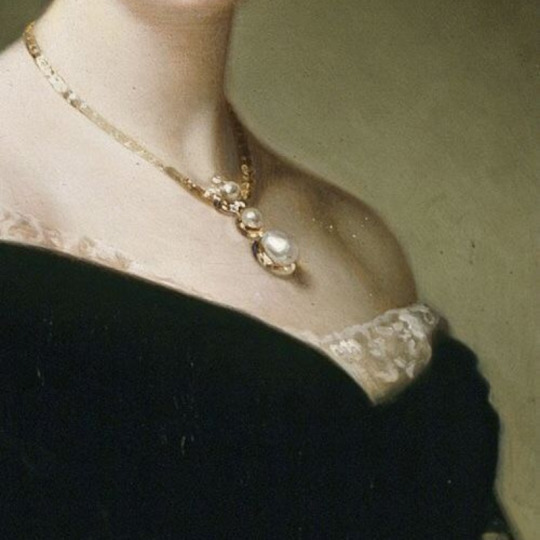

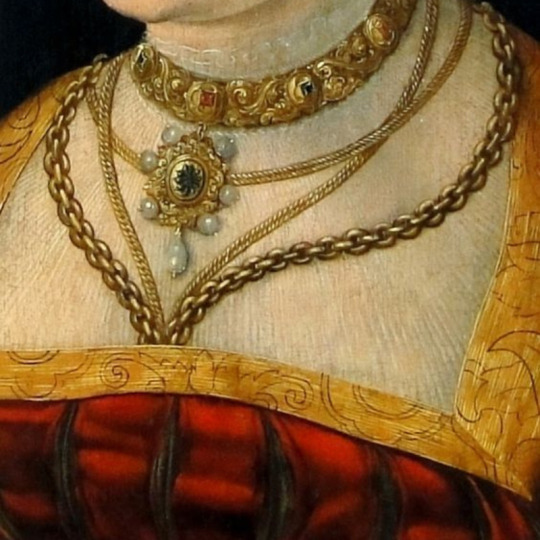
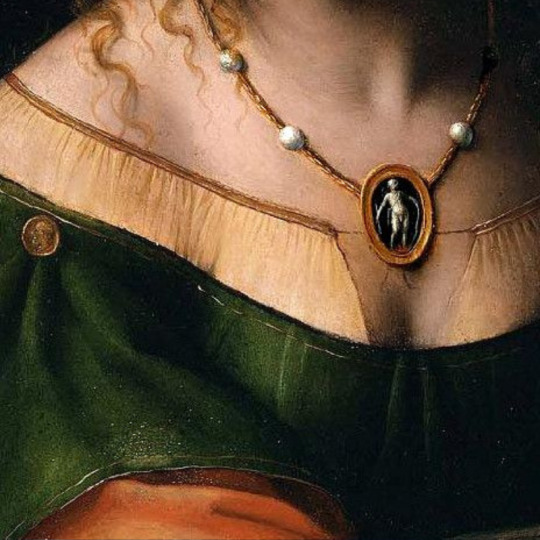

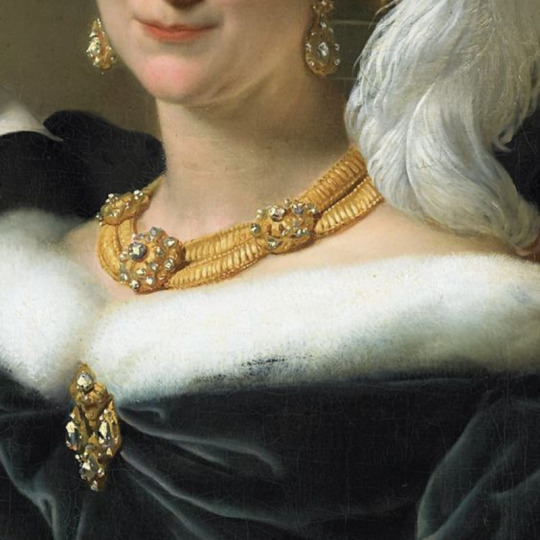

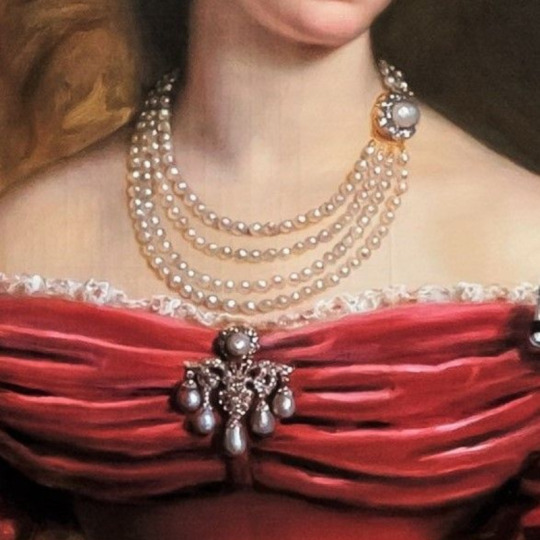
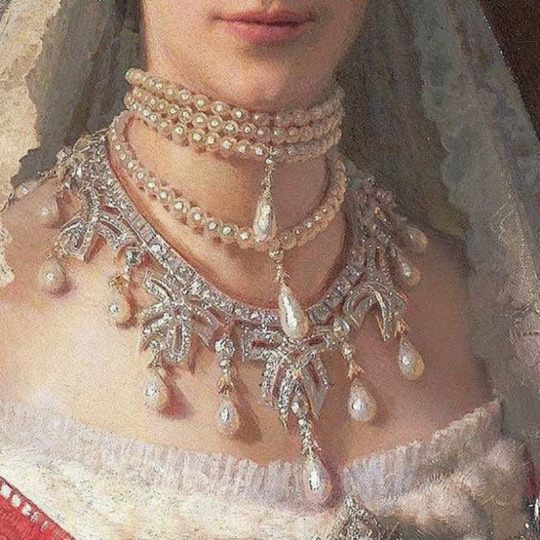




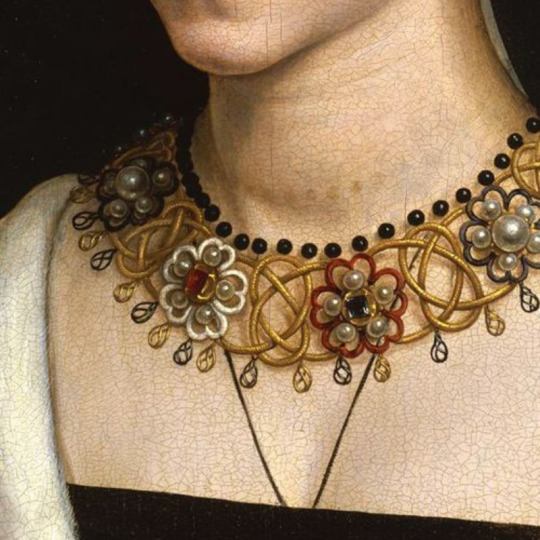
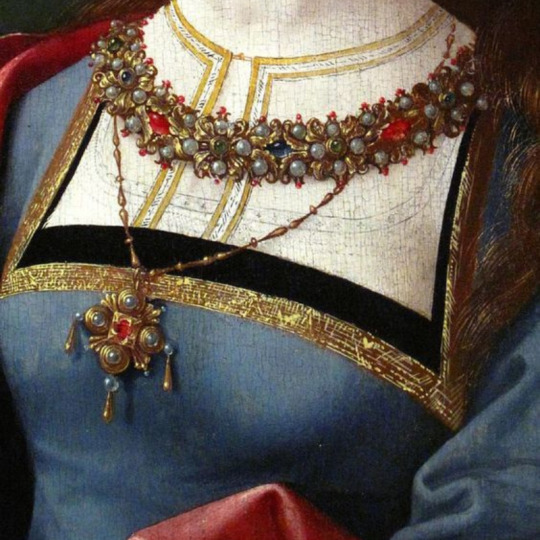
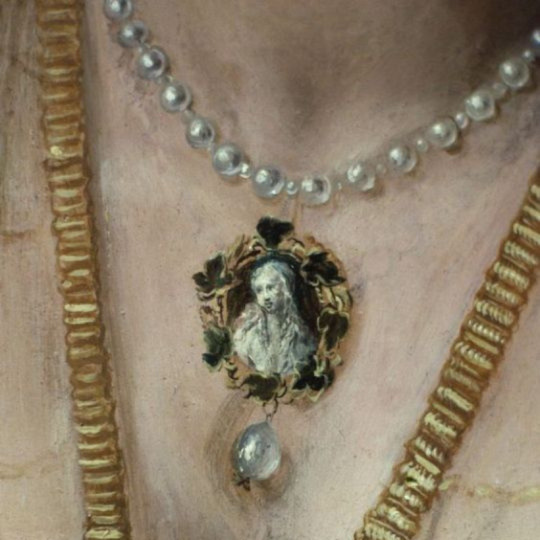
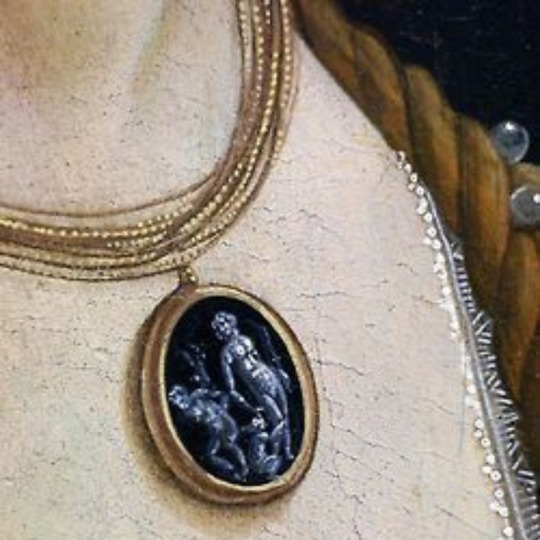

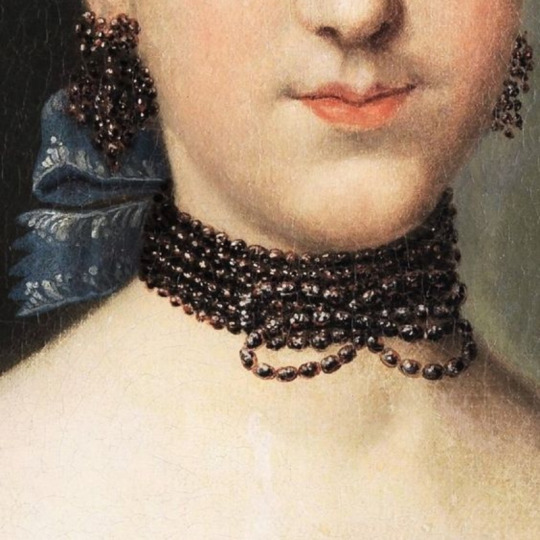



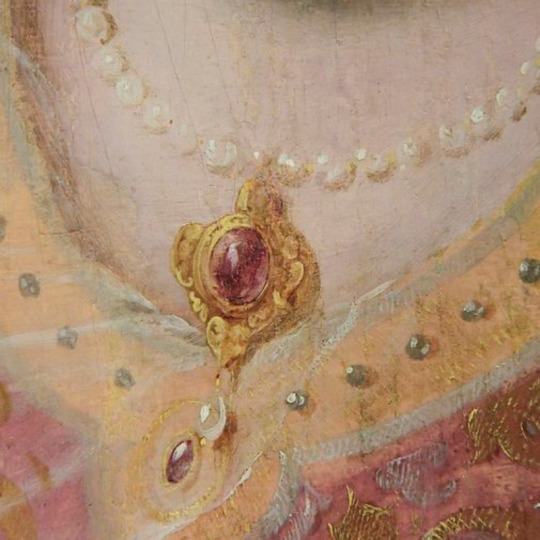

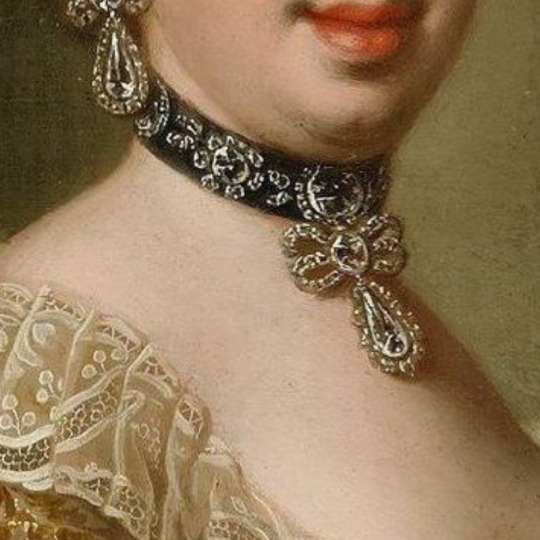
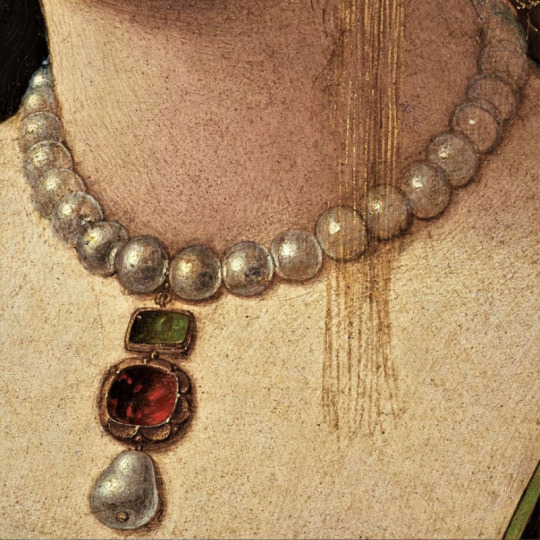
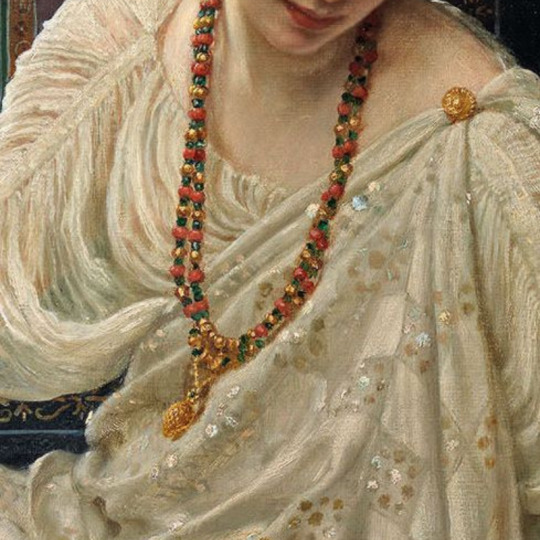
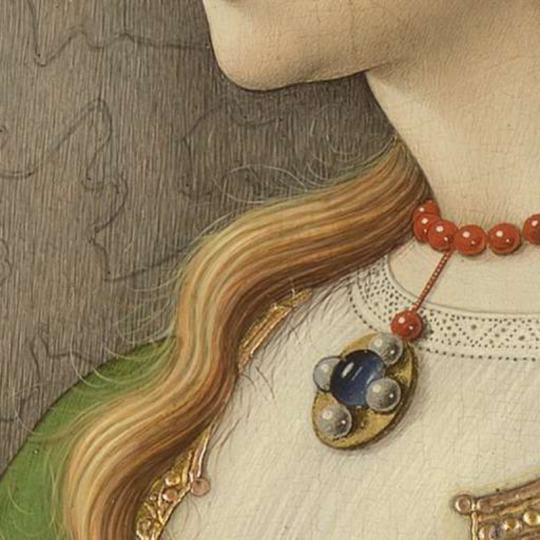

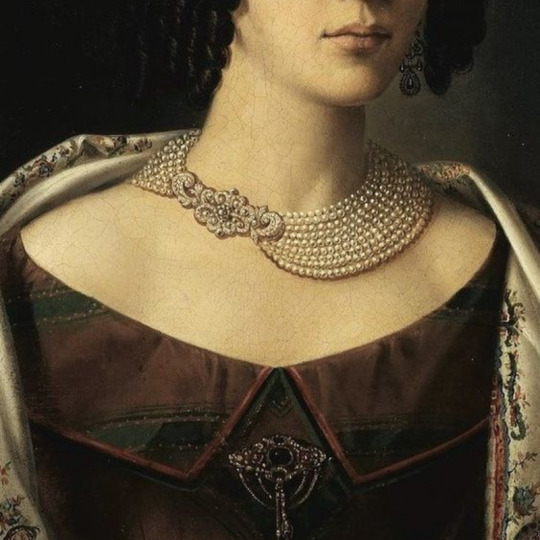
necklaces/chokers + art
#concepcion remisa de moret by federico madrazo#sorry some of these might not have titles because searching these through googles is virtually impossible#lucas cranach the elder by unknown#salome with the head of john the baptist by bernardindo lunini#portrait of a lady by aristeidis oikonomou#not sure unknown by unknown?#the painting is by mortiz stifter#princess louisa of prussia by jean baptise van der hulst#not sure#cant find the artist#i think this is by cornelis le mair#the girl in the painting is hortense de beauharnais but i dont know the artist#artist is markos kampanis#maria portinari by hans memling#i cant find the artist nor the painting but i do know thats a tutor gown#portrait of a lady by pedro campana#portrait of a young lady by sandro botticelli#cant find artist nor painting#young noblewoman with a rose by johann heinrich#artist is bartholmeus van der helst#painter is antonio moro#the subject is mary edward hogarth but i cant find the artist#painter is frans hals#painter is andrea solario#unknown by unknown (cant find it)#portrait of a lady in red by bernardino zaganelli#circe by edward john poynter#mary madalene by carlo crivelli#lady mary wortley montagu by joseph highmore#well i know the location is 19th century russia but cant find the artist
7K notes
·
View notes
Text

Earthly Vanity and Divine Salvation, a 1480s painting by the German artist, Hans Memling.
0 notes
Photo
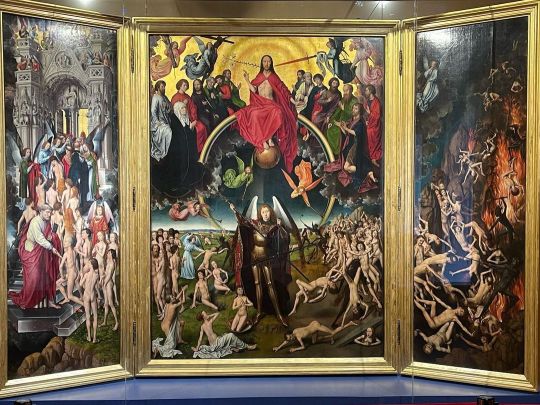
Hans Memling 1430/40-1494 Bruges “Last Judgment” 1467-1473 tempera, oil on panel Photo is taken by: @robertpuffjr AN ARTIST FROM THE LOWER RHINE REGION, PAINTED THE LAST JUDGEMENT AT THE BEGINNING OF HIS PAINTING CAREER. IN SPITE OF ITS BEING THE FIRST WORK HE CREATED SHORTLY AFTER ARRIVING TO BRUGES IN 1465. ITS PERFECT WORKMANSHIP, TECHNICAL MASTERY AND REMARKABLE MATURITY OF THE PRESENTATION OF THE MULTI-LAYERED AND COMPLEX THEME ARE ASTOUNDING. IT IS ASSUMED THAT MEMLING, AT THE START OF HIS INDEPENDENT ARTISTIC ACTIVITY IN THE METROPOLIS OF BRUGES, WAS WELL-KNOWN IN THE CIRCLE OF POWERFUL PATRONS AND ART LOVERS OWING TO HIS CONTACTS WITH THE INTERNATIONALLY FAMOUS ROGIER VEN DER WEYDEN, IN WHOSE WORKSHOP HE HAD TRAINED AND WITH WHOM HE HAD WORKED UNTIL 1464. HOWEVER, THERE IS NO MENTION OF THIS IN THE ARCHVAL SOURCES. (This writeup is taken from the description at the museum.) National Museum in Gdańsk, Poland 🇵🇱 #gdansk #gdańsk #memling #hansmemling #historyofart #arthistory #greatworksofart #artmuseum #art #artist #masterpiece #painting #museumvisit #artlover #artists #artblogger (at Muzeum Narodowe w Gdańsku) https://www.instagram.com/p/Ci5M42dDerp/?igshid=NGJjMDIxMWI=
#gdansk#gdańsk#memling#hansmemling#historyofart#arthistory#greatworksofart#artmuseum#art#artist#masterpiece#painting#museumvisit#artlover#artists#artblogger
1 note
·
View note
Text

'Kunstschatten uit Brugge'. Translates into English as 'Treasures from Bruges'.
Cheaper than the entry fees, means more money to spend on beer! Small book of paintings and artefacts on display in the city's museums, €3. ¡Hola! 🤓
Cover features portrait by German-Flemish artist Hans Memling. More info here.
EDIT: I should stop being lazy, lounging about drinking beer, and go into the museums tomorrow. Yeh. The book is making me think. Then when I get home I can apply my scalpel and cut it up for scrapbooks! Or, maybe I'll go to Antwerp instead. Will see what the skies say in the morning.
0 notes
Photo

MWW Artwork of the Day (4/12/21)
Hans Memling (German/Flemish, c. 1433-1494)
The Annunciation (c. 1480–89)
Oil on panel transferred to canvas, 76.5 x 54.6 cm.
The Metropolitan Museum of Art, New York (Robert Lehman Collection)
Memling modeled this Annunciation on the left wing of Rogier van der Weyden’s Saint Columba Altarpiece (now in Munich), but his innovative rendition portrays the Virgin swooning and supported by two angels, rather than kneeling. Like other fifteenth-century Flemish painters working in the wake of Jan van Eyck, Hans Memling cloaked religious imagery in the pictorial language of everyday life, paying close attention to naturalistic detail. This Annunciation takes place in a comfortably appointed bedchamber, though many of the domestic furnishings have symbolic connotations. The carafe of water, through which light passes uncorrupted, and the vase of lilies are symbols of the Virgin's purity, while the empty candleholder signifies her imminent role as bearer of Christ, light of the world. Gabriel's priestly garb alludes to the ritual of the Mass and, therefore, the incarnation of Christ. A soft glowing light falls on the Virgin and suffuses the room, elevating the scene from the realm of the ordinary and signaling the sacred nature of the drama. (from the MMA catalog)
10 notes
·
View notes